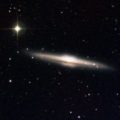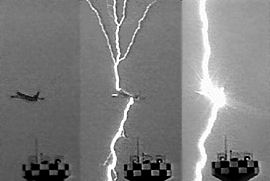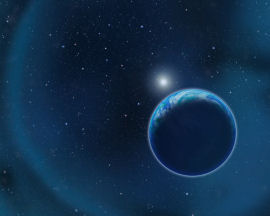
Galactic collisions are common phenomena, according to Yale astronomer, Pieter van Dokkum, who used hundreds of images from two of the deepest sky surveys ever conducted to conclude that more than half of the largest galaxies in the nearby universe have collided and merged with another galaxy in the past two billion years.
Cosmologists believe that large galaxies were assembled primarily by mergers, rather than evolving by themselves in isolation. But the fact that the most massive galaxies appear to be the oldest, leaving minimal time since the Big Bang for the mergers to have occurred, has been a niggling inconsistency in this theory. “Our study found these common massive galaxies do form by mergers,” said van Dokkum. “It is just that the mergers happen quickly, and the features that reveal the mergers are very faint and therefore difficult to detect.”
While many people may be familiar with the spectacular mergers of blue spiral galaxies that were publicized in several Hubble images, Van Dokkum’s red galaxy (a color selection biased to select the most massive galaxies in the local universe) mergers appear to be much more common. This ubiquity is a confirmation of predictions by the most common models for the formation of large-scale structure in the Universe, while also helping solve the apparent-age problem. “In the past, people equated stellar age with the age of the galaxy,” van Dokkum explains. “We have found that, though their stars are generally old, the galaxies that result from these mergers are relatively young.”








Comments are closed.